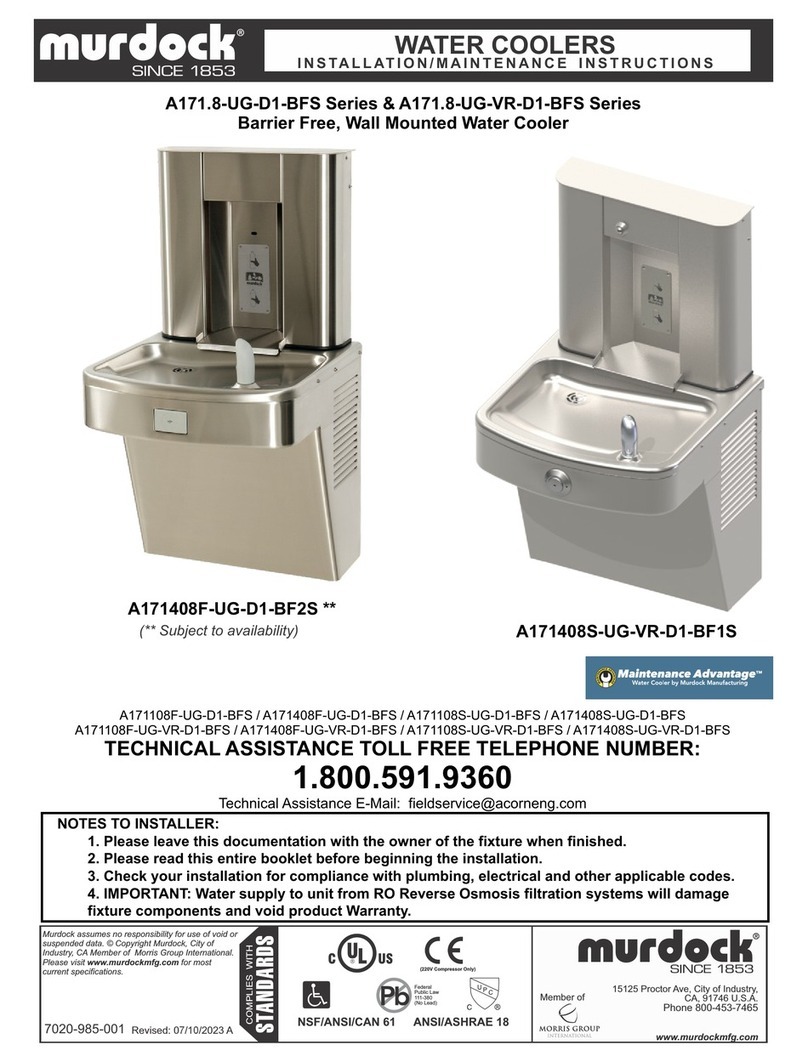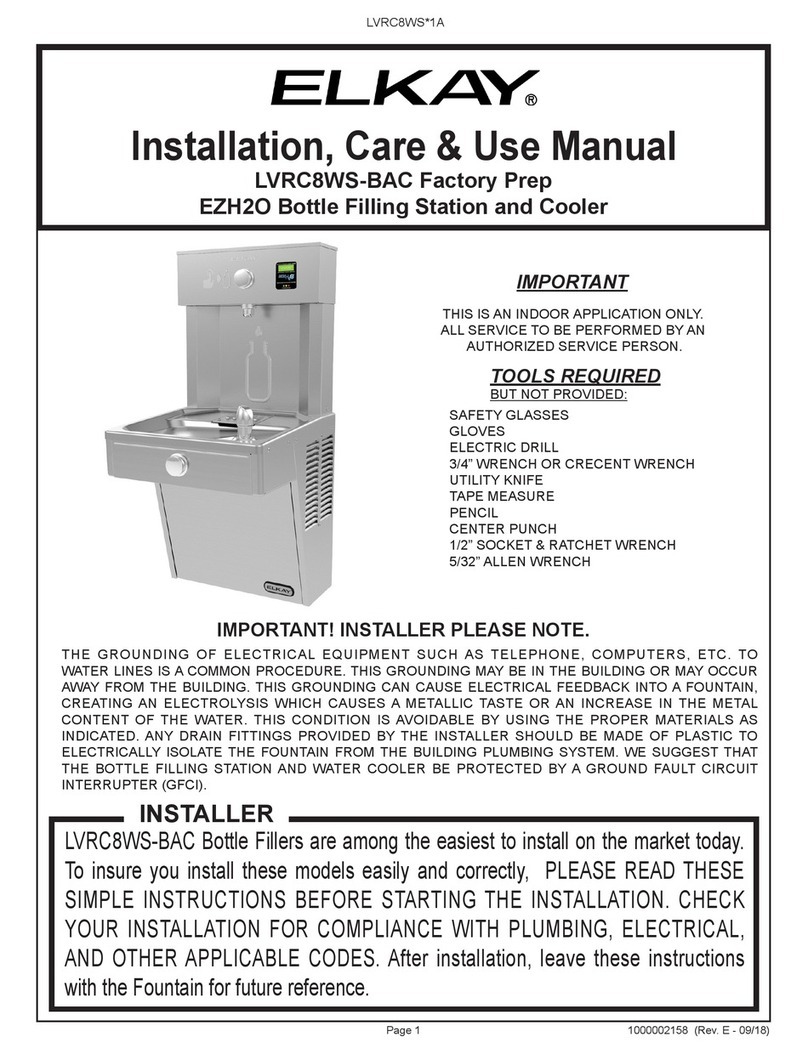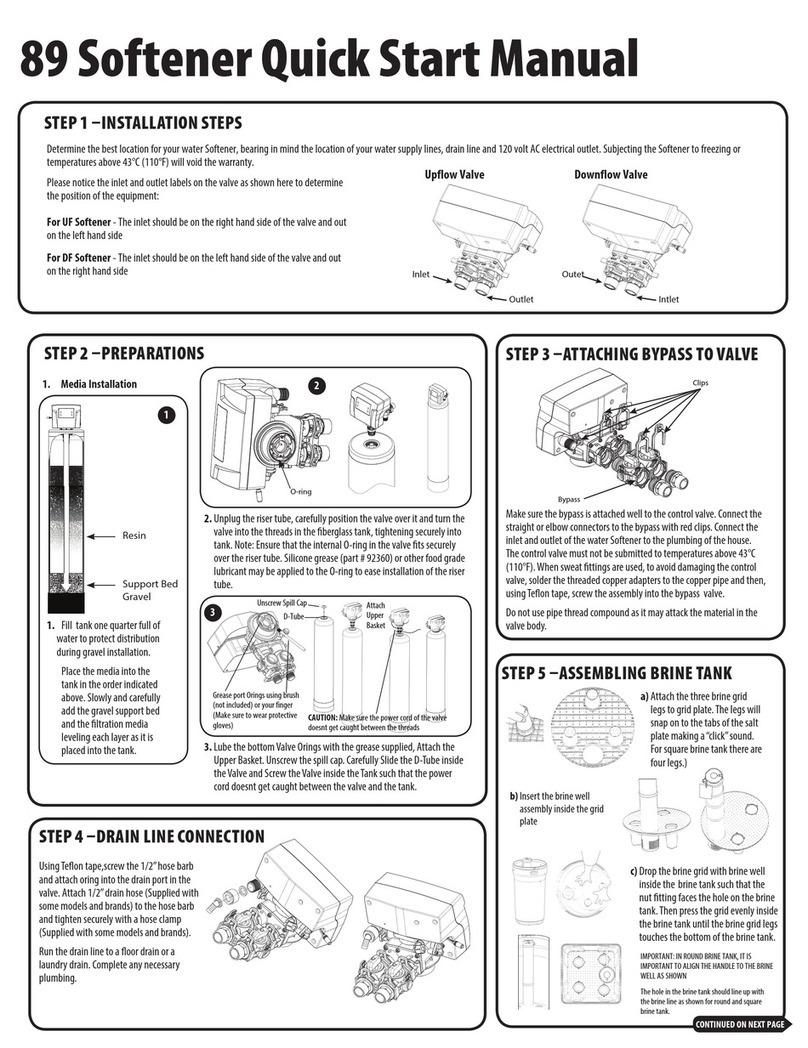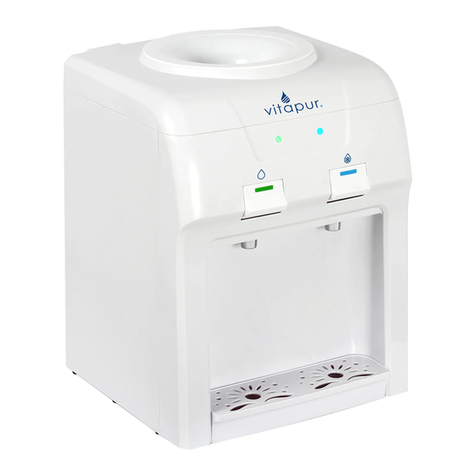Pfannenberg Rack Series Manual

English
1
Operating and Maintenance Instructions
MANUFACTURER
DASSI S.r.l. –Member of the Pfannenberg Group
Via La Bionda, 13 I-43036 Fidenza (PR)
Tel. +39 0524-516711 Fax. +39 0524-516790
English
Operating and Maintenance Instructions
Deutsch
( Übersetzung
Originalbetriebsanleitung )
Betriebs - und Wartungsanleitung
Italiano
( Traduzioni delle istruzioni
originali )
Libretto di istruzioni e assistenza
Español
( traducción
de las instrucciones originales )
Libro de Instrucciones
Français
(traduction
de la notice originale )
Cahier d’Instructions
Русский
( перевод
из первоначальных
инструкций )
Инструкция по эксплуатации
Rack series
CC series
EB small
EB big series
EB extensions series
AR series
HK series
PWW series
VLV series

English
2
Pfannenberg Service Company
ITALY
Pfannenberg Italia s.r.l.
Via La Bionda, 13 I –43036 FIDENZA (Parma)
Tel. +39 0 524 / 516-711 –Fax +39 0 524 / 516-792
info@pfannenberg.it -www.pfannenberg.com
GERMANY
Pfannenberg GmbH
Werner-Witt-Straße 1. D -21035 Hamburg
Tel. +49 40 / 73412-105 –Fax +49 40/ 73412-101
info@pfannenberg.com - www.pfannenberg.com
U.S.A.
Pfannenberg Inc
68 Ward Road. Lancaster, NY 14086
Tel. +1 716 / 685-6866 –Fax +1 716 / 681-1521
info@pfannenbergusa.com -www.pfannenberg.com
CHINA
Pfannenberg (Suzhou) Pte Ltd
5-1-D, No.333 Xingpu Road
Modern Industrial Park, SiP,
Suzhou 215021, Jiangsu Province, P.R.C
Tel: +86-512 6287 1078 –Fax: +86-512 6287 1077
info@pfannenberg.cn -www.pfannenberg.cn
ASIA
Pfannenberg Asia Pacific Pte Ltd
61 Tai Seng Avenue
# B1-01 UE Print Media Hub
Singapore 534167
info@pfannenberg.com - www.pfannenberg.com
For Service, please contact the nearest Pfannenberg Service Compa

English
3
Index
1. Warranty
2. Safety
3. Residual risks
4. Receiving and Unpacking
5. Positioning the Chiller
6. Foundation
7. Connections
8. Process Water / Fluids
8.1 Waterquality
9. Process Oil / Fluids
10. Ambient temperature
11. Start up of the chiller
Debug Table
APPENDIX A1
APPENDIX A2
APPENDIX B1
APPENDIX B2
APPENDIX C
1Close Loop Chiller Start-up
2Water - water Chiller Start-up
1. Warranty
This warranty covers the material design and quality during the first 12 months starting from the delivery date. Within this
defined period our Company will either repair, or replace (with ex works delivery) all parts which on the sole opinion of the
supplier, have caused quality problems which are not a result of poor maintenance, inexperience of the operators, faulty
installation or failures which are caused because this instruction was not followed. This warranty does not include the expenses,
travel hours and travel allowance related to our technicians in case their presence is required at the customer's factory. These
expenses will be totally invoiced as working hours. The customer shall not have the right to claim any refund from our Company
for the time during which the machine shall remain inactive, related to repairs. No refund will be acknowledged for expenses,
damages, either direct or indirect, which are a result of the above.
Separate agreements with customers have to be agreed in written form may vary from this paragraph.
2. Safety
The Chiller instructions must be read by the installer and personnel in charge for operation, before starting the chiller.
All safety and security instructions given in this manual have to be observed!
Only qualified personnel are allowed to install, operate and do the maintenance work.
Non observance of the instructions may cause injuries and will cancel the manufacturers liability for subsequent damage.
National regulations on accident prevention, regulations of the local power supply authorities as well as any specific safety
instructions for chiller must be observed.
The safety of the unit is only guaranteed, if it is used as intended.
The following points must be observed before commissioning and while operating the Chiller:
Familiarize yourself with all operating controls.
Make sure that all working limits indicated within unit label are observed.
Use protective devices to check electrical insulation. Do not carry out any work on any part of the equipment that might
be live with wet clothing, hands and feet.
Never spill or pour any cooling medium into the environment as this may cause health hazard.
The components of the Chiller must not be modified in any way.
Disconnect the power supply and release pressure from any pressurized component before carrying out any service
work on the Chiller.
A qualified commissioning engineer must ensure that the Chiller has been connected to the electrical mains in
accordance with the standard EN 60204 and all other applicable national regulations.

English
4
For Health and Safety reasons, please find below a list of potential risks that the operator is exposed to while commissioning
and/or operating and/or dismantling the unit:
Risk
Recommended Safety Measure
Residual Risk to be aware of
sharp edges (such as heat
exchanger fins and internal
metal plates live edges)
It is recommended to use safety equipment
(such as gloves and protective cloths)
-
hot surfaces
(such as electric motor body of
pump or compressor and
refrigeration copper pipes)
It is recommended to use safety equipment
(such as gloves and protective cloths)
-
refrigerant under pressures up
to 30 bar (435 PSI) within
refrigeration circuit
Always verify functionality of High Pressure
Switch.
Never open refrigeration circuit for
maintenance before releasing pressure*
Due to Toxicity of refrigerant
and oil still inside circuit, it is
recommended to use suitable
gloves and mask while
servicing refrigerant
equipment.
cooling water/glycol mixture
under pressures up to 5,8 bar
(85PSI) within hydraulic circuits
(PWW series: PS = 12 bar)
Always check that all cooling water/glycol
pressure is released before sectioning and
servicing hydraulic equipment using purging
system and refill ball valve
Due to Toxicity of glycol and oil
still inside circuit, it is
recommended to use suitable
gloves and mask while
servicing hydraulic equipment
electrical shock
Always disconnect power supply and post a
‘MAINTENANCE WORK IN PROGRESS’
sign on a visible position next to the main
switch during service
-
rotating fans
Always disconnect power supply and make
sure all mechanical equipment is stopped
before service.
-
Toxicity of refrigerant and
cooling liquid
It is recommended to use suitable protection
equipment (such as gloves, glasses, safety
shoes)
-

English
5
*NOTE: for environmental reasons never discharge refrigerant into atmosphere (follow local regulations to properly dispose of
refrigerant).
It is recommended to familiarize with all technical documentation provided with the unit (such as Mechanical & Electrical
Diagrams) in order to avoid improper operation of this unit.
It is also mandatory to comply with Regulation (EC) No 842/2006 of the European Parliament and of the Council of 17 May
2006 on certain fluorinated greenhouse gases.
The above mentioned Regulation lays down specific measures and restrictions to be considered while commissioning,
operating, maintaining and disposing any equipment containing greenhouse gases, such as HFCs, as specified in Annex I.
The Regulation (EC) No 842/2006 also (but not only) specifies mandatory leakage-check frequency to be performed by certified
personnel and mandatory records providing the evidence of exact fluorinated gas charge and subsequent added and/or
recovered quantities as described in Article 3 (reported below):
Article 3 Containment
Operators of the following stationary applications: refrigeration, air conditioning and heat pump equipment, including their
circuits, as well as fire protection systems, which contain fluorinated greenhouse gases listed in Annex I, shall, using all
measures which are technically feasible and do not entail disproportionate cost:
(a) prevent leakage of these gases; and
(b) as soon as possible repair any detected leakage.
Operators of the applications referred to in paragraph 1 shall ensure that they are checked for leakage by certified personnel
who comply with the requirements of Article 5, according to the following schedule:
(a) applications containing 3 kg or more of fluorinated greenhouse gases shall be checked for leakage at least once every 12
months; this shall not apply to equipment with hermetically sealed systems, which are labeled as such and contain less than 6
kg of fluorinated greenhouse gases;
(b) applications containing 30 kg or more of fluorinated greenhouse gases shall be checked for leakage at least once every six
months;
(c) applications containing 300 kg or more of fluorinated greenhouse gases shall be checked for leakage at least once every
three months.
The applications shall be checked for leakage within one month after a leak has been repaired to ensure that the repair has
been effective.
For the purposes of this paragraph, ‘checked for leakage’ means that the equipment or system is examined for leakage using
direct or indirect measuring methods, focusing on those parts of the equipment or system most likely to leak. The direct and
indirect measuring methods of checking for leakage shall be specified in the standard checking requirements referred to in
paragraph 7.
Operators of the applications referred to in paragraph 1, containing 300 kg or more of fluorinated greenhouse gases, shall install
leakage detection systems. These leakage detection systems shall be checked at least once every 12 months to ensure their
proper functioning. In the case of such fire protection systems installed before 4 July 2007, leakage detection systems shall be
fitted by 4 July 2010.
Where a properly functioning appropriate leakage detection system is in place, the frequency of the checks required under
paragraph 2(b) and (c) shall be halved.
In the case of fire protection systems where there is an existing inspection regime in place to meet ISO 14520 standard, these
inspections may also fulfill the obligations of this Regulation as long as those inspections are at least as frequent.
Operators of the applications referred to in paragraph 1, containing 3 kg or more of fluorinated greenhouse gases, shall
maintain records on the quantity and type of fluorinated greenhouse gases installed, any quantities added and the quantity
recovered during servicing, maintenance and final disposal. They shall also maintain records of other relevant information
including the identification of the company or technician who performed the servicing or maintenance, as well as the dates and
results of the checks carried out under paragraphs 2, 3 and 4 and relevant information specifically identifying the separate
stationary equipment of applications referred to in paragraph 2(b) and (c). These records shall be made available on request to
the competent authority and to the Commission.
Regulation (EC) No 842/2006 also include: ‘Scope’ –Article 1; ‘Definitions’ –Article 2; ‘Recovery’ –Article 4; ‘Training and
Certification’ –Article 5; ‘Reporting’ –Article 6; ‘Labelling’ –Article 7; ‘Control of Use’ –Article 8; ‘Placing on the Market’ –
Article 9; ‘Review’ –Article 10; Article 11; ‘Committee’ –Article 12; ‘Penalties’ –Article 13; Article 14; ‘Entry into force’.
CAUTION: in accordance to the F-GAS regulation DRP43/2012, every year the operator (the owner of
the equipment) is responsible to ensure a Gas leakage test, the recording of the gas quantity change inside the unit
and the communication to the responsible agency of the state in the European community where the unit is in
operation.
Please ask Pfannenberg service in case support is needed

English
6
3. Residual risks
There are some residual risks after the installation of the unit that have to be considered:
Residual risks according to 2006/42/CE Directive:
The condenser has fins on his external surface, so there is the possibility for the operator to touch sharp edges
during service of the unit.
Although the unit is designed with all the possible safety requirements, in case of external fire there is the
possibility that the internal pressure and temperature of the unit will increase in a dangerous and uncontrollable
way; in that case use the extinguishing tools suitable for that conditions.
Residual risks according to 97/23/CE Directive:
Although the unit is designed with all the possible safety requirements, in case of external fire there is the
possibility that the internal pressure and temperature of the unit will increase in a dangerous and uncontrollable
way; in that case use the extinguishing tools suitable for that conditions.
For the series production of the standard units of category , the pressure resistance test (typically the
hydrostatic pressure test) is made on a statistic base, not on all units.
This can be accepted, also considering all the safety devices mounted on the units.
4. Receiving and Unpacking
Each unit is packed in a carton box.
It is recommended to pay particular attention during handling and transportation of the unit and to maintain the packaged units
in the vertical position, in order to avoid any kind of dents to the external frame and any damage to the internal components.
Secure units to the transport vehicle with suitable strapping.
Note! The above mentioned packages are not suitable for piling up units on top of each other
Store the Chiller in a dry place, away from heat sources. All waste materials should be recycled in the appropriate manner.
For the operations of lifting and movement it is necessary to use a fork lift truck with proper load capacity and with forks longer
than the base of the Chiller. Avoid sudden movements which can damage the framework and the internal components.
PFANNENBERG Std Chiller (above 45Kg weight) are also provided with 4 eye bolts for lifting and transportation; to be used for
vertical loading/unloading only (to see the right point for lifting please refer to the stickers on the unit).
Check after the final positioning of the Chiller the internal connections to avoid damage during operation.
EB Models
Packaging solution
EB 30 –43 –60 WT
EB 75 –90 WT
EB 130 –150 WT
Chiller supplied on a wooden
pallet and protected by
a cardboard box
EB 190 –250 WT
EB 300 –350 –400 WT
Chiller supplied on a wooden
pallet and wrapped
with protective film
Picture 1 –Chiller lifting

English
7
5. Positioning the Chiller
Place the Chiller in an area shielded from any possible manufacturing residuals (shavings, dust, etc.) and well-ventilated, away
from heat sources and direct influence of sun light ; if possible, near the user system, in order to avoid load losses along the
hydraulic connection pipes. Use the adjustable feet to level off the cooling unit.
The customer has to place a suitable room at disposal, as shown in the figure:
Picture 2 –Room minimum dimensions, x=h=1.5 m
According to the CEI EN 60204-1, the unit is provided with a lockable main switch which is not positioned at a minimum
distance of 0,6 m from the basement of the unit, so it’s recommended to install the unit in a position that allows the main switch
to maintain that minimum distance from the floor.
CAUTION: For standard unit the outdoor installation is absolutely forbidden, even if under a roof.
Only special designed outdoor units can be used in outdoor installation.
For regular maintenance or adjustment, the chiller shall be located between 0,3 m and 1,0 m above the servicing
level.
6. Foundation
PFANNENBERG chillers should be set on a concrete slab. The slab should extend a minimum of 30cm (12 inches) beyond the
perimeter of the Chiller to prevent damage from lawn maintenance equipment, etc. The Chiller, which should be level and
properly anchored, is provided with 4 antivibration dampers on the bottom of the unit, which allow the support and the fixing of
the Chiller and to dampen the vibrations and decrease the noise during the operation.

English
8
7. Connections
WARNING: Hydraulic connections are the first ones to be assembeled during installing operation, to
be followed by electric connections. Remove the caps inside the hydraulic fittings connection before to connect the
chiller to your device.
WARNING: The chillers has been cleaned by means of specific cleaning products. The eventual
findings of solid particles in the hydraulic system might cause the loss of warranty.
Hydraulic connections. For the hydraulic connection please refer to the enclosed hydraulic plan. The flow rate and the fluid
circulation direction must be respected during connection in accordance with INLET-OUTLET identification plates.
CAUTION: Fill the tank before connecting Hydraulic tubes (as described in the start-up procedure).
Remove the caps inside the hydraulic fittings connection before to connect the chiller to your device.
Example of Hydraulic connection plate
Picture 3 –Hydraulic connection plate

English
9
CAUTION: In case of unit with tank, please fill the tank before connecting Hydraulic tubes.
Example of Electric connections
The unit must be electrically connected by the customer
Please Note:
Electrical installation must respect all valid safety standards.
It’s advisable to install a magnetic-thermal cutout upstream power cable.
Make sure the system is adequately earthed.
Check that the voltage and frequency of the power supply correspond to the specifications on the unit’s data plate
and/or enclosed electrical plan.
Pfannenberg Chiller units are designed for TN Earthing Systems. Use the Maximum fault loop Chiller Impedence value
for sizing purposes on site (refer to Zpe value specified within Electrical Diagram attached)
For Rack series provide the switch-disconnector in accordance with IEC 60947-1, IEC 60947-2, IEC 60947-3.
Picture 3.b –Hydraulic connection plates (PWW )
Secondary circuit
„application side“
Connection 3/4“ (PWW 9000-12000)
Connection 1“ (PWW 18000-24000)
OUT
IN
OUT
IN
Primary circuit
„facility side“
Connection 3/4“ (PWW 9000-12000)
Connection 1“ (PWW 18000-24000)
Picture 4 –Electric
connection plate

English
10
CAUTION: In case units that can work with different voltages (400V or 460V), connect the transformer
of the auxiliary circuit located inside the e-box in the right way.
Unit CE: Factory setting 400/3/50, see picture 5
Unit UL: Factory setting 460/3/60, see picture 6
Voltage Limitations:
Pfannenberg standard Chiller operation is guaranteed within these ranges:
Nominal voltage ±10 %
Nominal frequency ±1 %
Please refer to the type label to see which are the operating nominal conditions of the unit.
Nominal conditions
V min
[V]
V max
[V]
f min
[Hz]
f max
[Hz]
230 V / 1 ~ / 50 Hz
207
253
49.5
50.5
230 V / 1 ~ / 60 Hz
207
253
59.4
60.6
400V / 3~ / 50Hz
360
440
49.5
50.5
460V / 3~ / 60Hz
414
506
59.4
60.6
8. Process Water / Fluids
PFANNENBERG chillers should be filled to the proper level with an inhibited glycol designed for Industrial chillers systems. Do
not use automotive antifreeze! The inhibitors used in automotive antifreeze can break down quickly and accelerate the
degradation of the coolant base (glycol); as well as promote corrosion in a system. Silicates used in automotive antifreeze coat
heat exchangers, resulting in reduced heat transfer. Also, silicates can gel causing fouling and plugging of a system.
The ratio of inhibited glycol to water should be adequate to prevent freezing at the lowest ambient temperature. Check the level
with all lines filled. The glycol mixture should be checked periodically (3 to 6 months) for proper concentrations. When
filling the system, always use a pre-mixed solution in the proper ratio to maintain freeze and corrosion protection. Distilled water
is recommended because many municipal water supplies contain large amounts of chlorine, which can react unfavorably with
glycol.
NOTE: If supply and return lines are overhead, the fluid in the piping may drain back and overflow the chiller reservoir
if the chiller is shut down. This can be prevented by using a check valve in the supply line, and either a solenoid valve
on the return line.
Picture 5
Transformer set at 400V
Picture 6
Transformer set at 460V

English
11
Corrosion protection:
PFANNENBERG recommends that Glycol is also used as a rust inhibitor. The minimum percentage of glycol (in a mixture with
water) recommended by some important glycol supplier (Clariant, Total, Dowfrost, etc..) is between 20% and 30%.
CAUTION: Please contact the glycol supplier to know the minimum percentage needed in order to use
the glycol as rust inhibitor
CAUTION: All the typelabel of the STD Pfannenberg unit are provided with a percentage of glycol of
20%
The percentages of glycol into the mixture is related to the minimum working temperature of the mixture (that must be in line
with the minimum working set point of the unit, please see the technical data of the unit):
Propylene glycol
dilution
Working range temperature
Freezing point
%
Min [°C]
Max [°C]
PP20P
20
+10
+101
-8
PP30P
30
0
+103
-14
PP50P
54
-25
+104
-38
Ethylene glycol
dilution
Working range temperature
Freezing point
%
Min [°C]
Max [°C]
PP20E
20
+10
+102
-8
PP30E
30
0
+103
-15
PP50E
50
-25
+108
-38
CAUTION: The higher the concentration of glycol the lower the amount of heat rejection you will be
able to get out of the fluid.
CAUTION: The type of glycol (propylene or ethylene) must be in conformity with the Standard
requested by the application, please contact the Glycol supplier
.
8.1 Waterquality
To keep the hydraulic circuit correct and trouble-free, it is necessary, to check the water quality and if necessary, carry out water
treatment. The standard circuit of a water chiller is a half open system, that means, part of the water steams/evaporates out
during operation. That means, that the concentration of chloride is getting higher and the system water will cause corrosion on
the installed components.

English
12
When using water, please consider the following:
Do not use deionized water.
Do not allow mechanical contamination to get in the water. Use water filters if this could be a problem.
Water hardness should not be too high. (see below)
Watch for chemical contamination. If this is to become a problem, treat the water with passivators and/or inhibitors.
Do not allow biological, slime bacteria, and algae contamination. If this does happen, treat the water with biocides.
PFANNENBERG recommends that the properties of the water has to be checked in order to identify the quality
Water quality A (No water treatment necessary):
Fresh water from the tap, free of contamination
Ph-level:7-9
Hardness:<5°dH
Conduction:<50µS/cm
Chlorine:<20 mg/l
Water quality B (Water treatment is recommended):
Fresh water from tap, free of contamination
Ph-level:7-8, 5
Hardness:<10°dH
Conduction:<300µS/cm
Chlorine:<50 mg/l
Water quality C (Water treatment manditory):
Fresh water from tap, free of contamination
Ph-level:7-8,5
Hardness:<20°dH
Conduction:<500µS/cm
Chlorine:<100 mg/l
9. Process Oil / Fluids
PFANNENBERG chillers (in the std oil version) are designed to work with the following oil viscosity:
Fluids and oil’s with viscosity ranging between ISO VG10 and ISO VG32 (*)
NOTE: Please contact Pfannenberg Group if your oil is outside to the standard range

English
13
CAUTION: do not utilize oils with sulphur-base additives; the copper-made exchanger could be
damaged (*)
CAUTION: a suitable filtering system, for the oil to be cooled, has to be adopted, with filtration degree
ranging from 60 to 90 µm (*).
NB (*) should any doubt arise, consult PFANNENBERG Technical Office.
OIL CHILLER w/o pump
Usually, the pumpless CHILLERS are inserted in a circuit already provided with pump. Refer to instructions provided by the
system manufacturer and check that the flow rate and pressure entering the REFRIGERATOR are compatible with the values
set down in the chapter of technical data
OIL CHILLER with pump
Usually, the CHILLERS with pump are utilized to cool an hydraulic system provided with reservoir; therefore, the filling is directly
carried out on the machine. Refer to the instructions provided by the system manufacturer
OIL Chiller Start-up
For Oil chiller is stricltly recommended:
-Contamination level of system fluid should not exceed class 18/15 ( ISO 4406 )
-to follow stricktly the operating range of pressure and temperature recomended
10.Ambient temperature
When ambient temperatures are above +40 °C (+45°C / 50°C, depending on the model) or below +15 °C, PFANNENBERG
should be consulted. High ambient temperatures reduce Chiller capacity. Low ambient temperatures require special controls.
Special conditions apply when temperatures drop below 0 °C (32 °F). Fluid heaters may be required to prevent freezing and to
hold the fluid in the Chiller reservoir at a constant temperature in order to reduce start-up delays while the fluid warms up to
operating temperature.
11.Start up of the chiller
CAUTION: WORK ON THE ELECTRICAL AND REFRIGERANT CIRCUITS MAY ONLY BE PERFORMED BY
QUALIFIED PERSONEL.!!!!!!!
NOTE: The following instruction will guide you through the start up procedure in detailed steps. For a
quick commissioning instruction please see appendix A1 or A2.
NOTE: For PWW unit start up please follow the Appendix A2 and Appendix C (except verification for
phase check of 3-phase models, which is described in this paragraph).
Please consider that secondary circuit is a close loop system which has the pump installed inside to the
unit. Primary circuit is an open loop, and the pump has to be installed from customer outside to the unit.

English
14
Turn main switch, control switch, all circuit breakers to switches to the - 0 - (off) position.
Check the internal hydraulical connection (clamps and fittings) that may get loose during transportation. The removable
panels of the units are the 2 lateral panels, which are fixed with captive screws.
Picture 9 –Lateral panel
It is of utmost importance to wash the Hydraulic Circuit before commissioning the complete Cooling System. Perform the
Cleaning Procedure, before continuing Start-Up phase: wash the system with FUCHS “ Maintain professional washer LI”
(Pfannenberg part number: 46783000135 –25kg Tank) at least for 10 minutes.
Diluition Percentace:
2% Professional Washer
98%Water
(it is recommended to use demineralized water)
CHILLER with tank: Remove cap of filling connection located at the top side of the chiller (external) or reservoir top plate
(internal).
Picture 7 –Main switch
OFF
Picture 8 –Circuit breakers
OFF
Picture 10 –Filling point

English
15
Fill reservoir with water-glycol mixture until the maximum level is reached. (water quality and treatment should be
established according to the application specifications)
Connect water inlet and outlet pipes and make a visual inspection.
Establish main power feed and alarm cable with customer’s equipment.
CHILLER with pump: Purge pumps by loosening purging screw that is located on the side of pump. Be advised that the
pump has been purged correctly when only water is visible.
Picture 11 / 12 –Filling process and max level
Picture 13 –Pipe connection
Picture 14 –Electrical connections
Picture 15 –Pump purging

English
16
CHILLER with pump: Main power switch and circuit breaker for the pump (pumps) should be switched to the on position. (all
other circuit breakers should stay in the off position)
CHILLER with pump: Main switch should be switched to the - l - (on) position and the pump (pumps) should be checked for
the correct rotation. (Please note that there is an arrow located at the back part of the pump for direction indication).
Reverse two phases R-S-T on the terminal board in case of incorrect rotation
CAUTION: The pump must not flat running or in inverse direction; therefore the checking of the correct rotation
must be quick
After the water circuit has run for approx. 5 minutes, switch off the main switch and check again the visual level of the tank;
refill the tank in case of need. At this time a visual inspection of the hydraulical circuit and all connections for leaks should
be made.
Picture 16 –Pump breaker ON
Picture 17 –Main switch ON
Picture 18 / 19 –Tank top up

English
17
Switch all circuit breakers to the “on” position.
Fan should be checked for the correct rotation. (Please note that there is an arrow located at the side part of the fan-shroud
for direction indication). Reverse two phases R-S-T on the terminal board in case of incorrect rotation.
NOTE: for units without fan please verify the correct rotation on the pump motor.
At this time the Chiller should operate automatically according to the controllers “set point values”. If necessary, set controller
according to customers temperature requirements. (Please refer to the manual of the thermostat delivered with the unit).
NOTE: The unit works correctly only if the cover panels are mounted on the unit, so if for some
reason during the installation of the Chiller they have been removed, please replace them
before switching on the unit.
After installation, the REFRIGERATOR does not need intervention by the Qualified Operator.
Every calibration operation on thermostats, pressure switch and whatever component of the refrigerating circuit, the personnel
of the Technical Servicing or the Refrigerator Technician only is competent.
For further information on chiller installation, start-up or troubleshooting please contact PFANNENBERG
Picture 20 –All circuit breakers ON
Picture 21 –Fan rotating direction

English
18
Debug Table
The information described below are useful for the service staff. The faults that require the intervention of a refrigeration
engineer must be carried out only by specialized staff. Follow all electrical legislation when working on the unit based on valid
laws of the countries were the unit is placed.
Chiller
Problem
Cause
Possible corrective Action
The unit does not start
up
No supply voltage
Check the supply main voltage line
Not working thermostat
Inspect the connection, check and correct the parameter settings and if there
is no fault, replace the thermostat,
The compressor protector (KLIXON)
has switched off
Important: After the shut down of the compressor, the resetting time will
depending on the environment of the compressor: In a hot closed
environment it will be 2 hours, in ventilated 1 hour.
Note: The compressors are protected against high temperatures and
currents, with of an internal or external device (Klixon). The internal/external
device protects the compressor against the following situations:
overheating due to an inadequate cooling of the compressor motor.
Blocked compressor due to a high temperature of the motor or a high
current.
Loose connections which may cause high currents
It works, but does not
cool
There is not enough gas in the
equipment
Service by a refrigeration engineer
Faulty thermostatic valve
Service by a refrigeration engineer
Too high heat load
Possible wrong application, to be checked with our staff
Refrigerant Cycle is not working
Problem
Cause
Possible corrective Action
Switching of low
pressure switch
The unit works for short periods, it
stops and starts again after a while.
The causes are:
Low gas level in the equipment
Outlet line of the compressor is
blocked and more in detail:
satured dehydrating filter,
blocked thermostatic valve.
Service by a refrigeration engineer
Switching of the high
pressure switch
The unit does not work.
The causes are:
Dirty condenser
Clean the condenser with compressed air if it is full of dust, or use proper
solvents suitable to remove sludges.

English
19
The fan is broken
Replace the fan
Too high ambient
temperature
Check that the chiller is located in a place that can guarantee suitable
ventilation of the refrigerating unit. Check also that the ambient temperature
does not exceed +40°C.
Note: after solving the cause of
the fault, start the chiller by
pressing the reset button located
on the external body of the
pressure switch itself (see the
picture)
Compressor
Problem
Cause
Possible corrective Action
The compressor works continuously and the chiller can’t control the liquid temperature:
-too low temperature of the liquid
-too high temperature of the liquid
Too low temperature
Broken thermostat (contact blocked)
Replace the thermostat
Too high temperature
Broken thermostat
Replace the thermostat
Not enough Freon in the unit
Please ask for the service by a refrigeration engineer
Too high heat load
Possible wrong application, to be checked with our staff
Pump
Problem
Cause
Possible corrective Action
No flow rate in the circuit
Pump is down
Check the right rotation of the electrical motor

English
20
APPENDIX A1
This manual suits for next models
17
Table of contents
Languages:
Popular Water Dispenser manuals by other brands
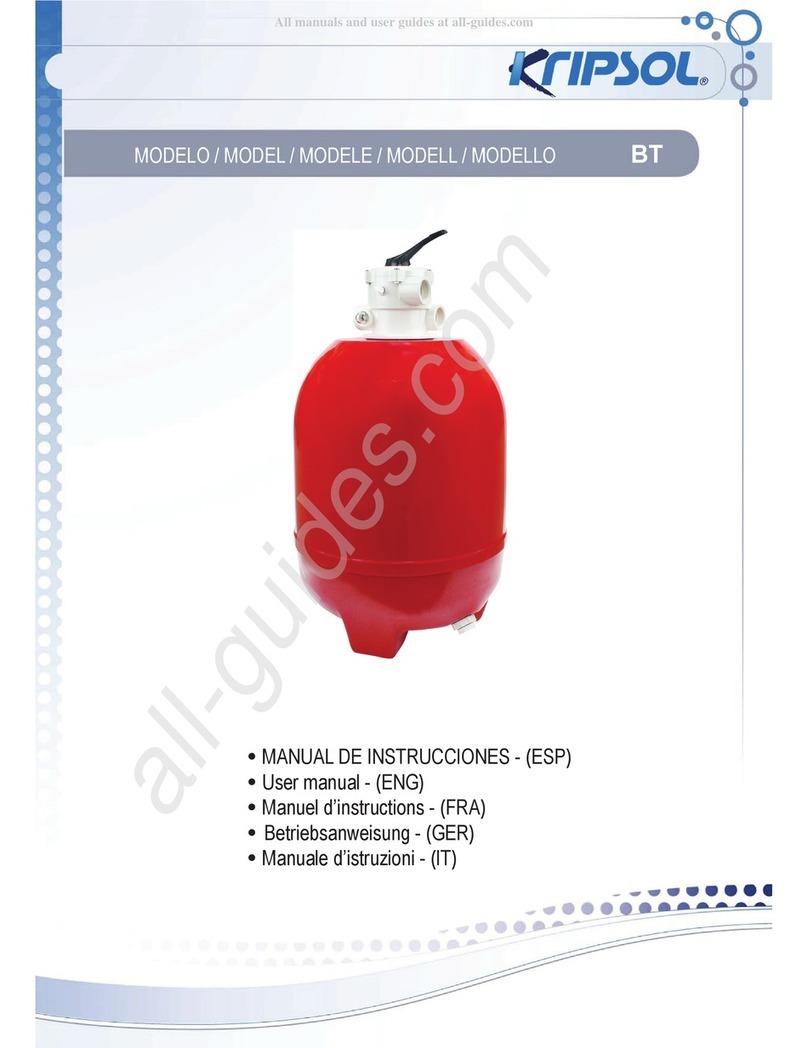
Kripsol
Kripsol BT Series user manual

Kenmore
Kenmore ULTRASOFT 250 625.38826 owner's manual
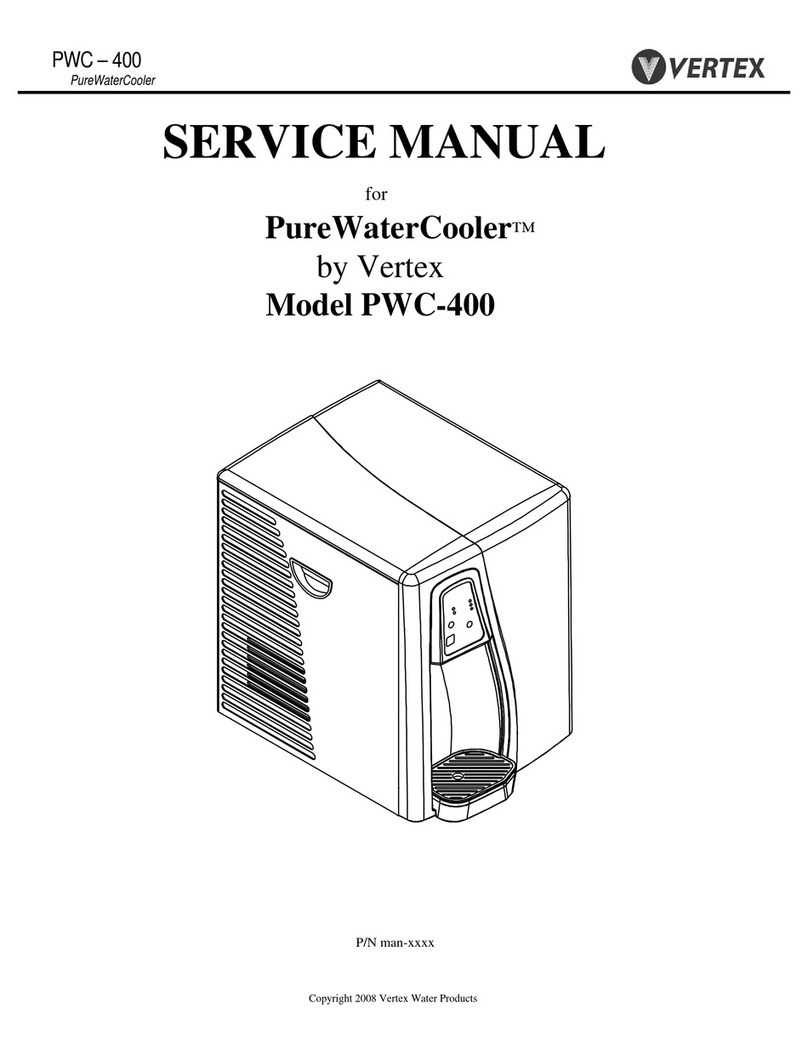
Vertex
Vertex PureWaterCooler PWC-400 Service manual
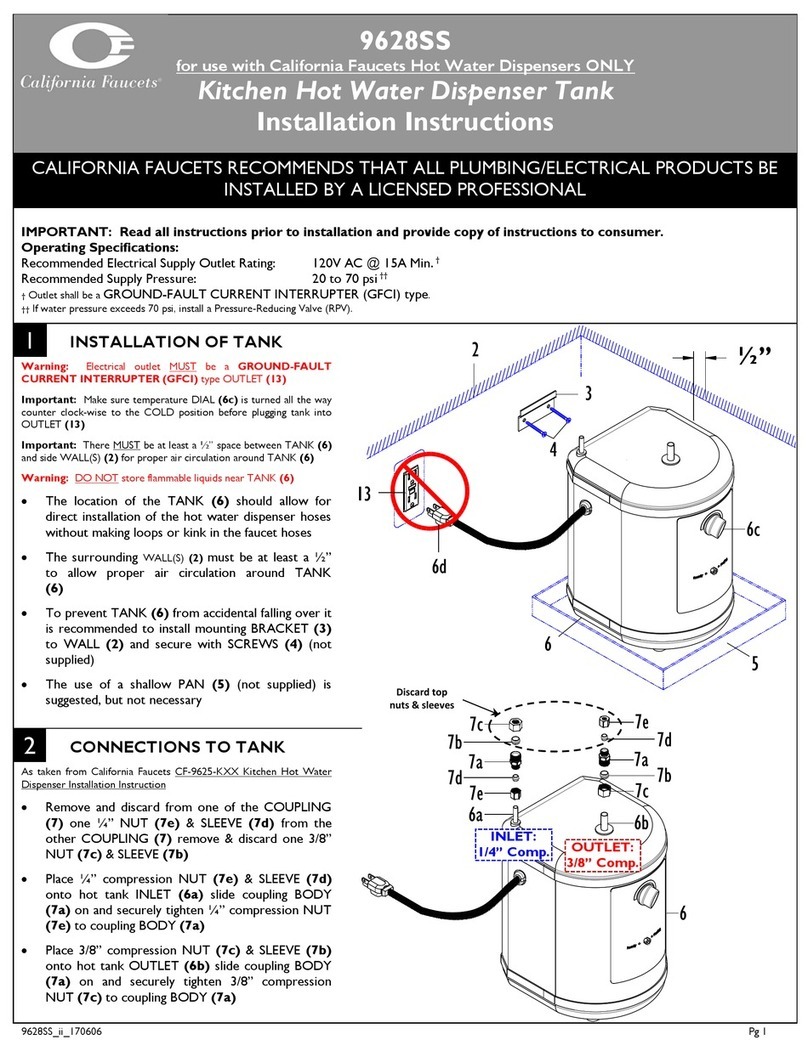
California Faucets
California Faucets 9628SS installation instructions
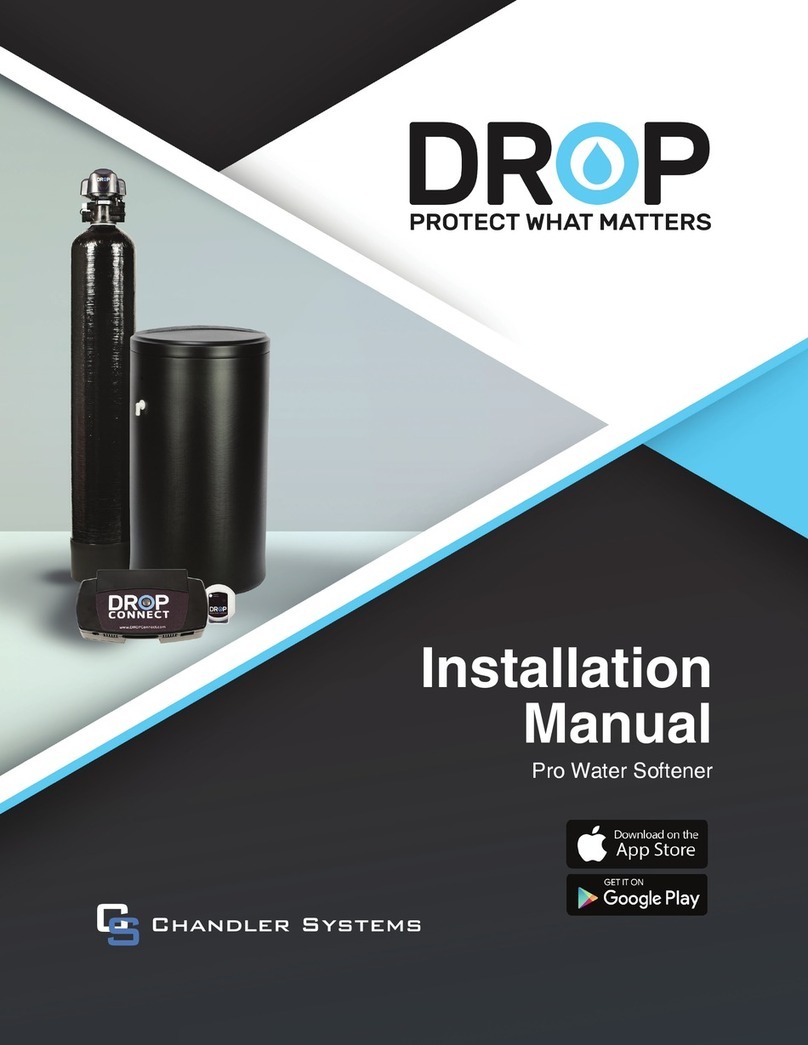
Drop
Drop Pro Water Softener installation manual
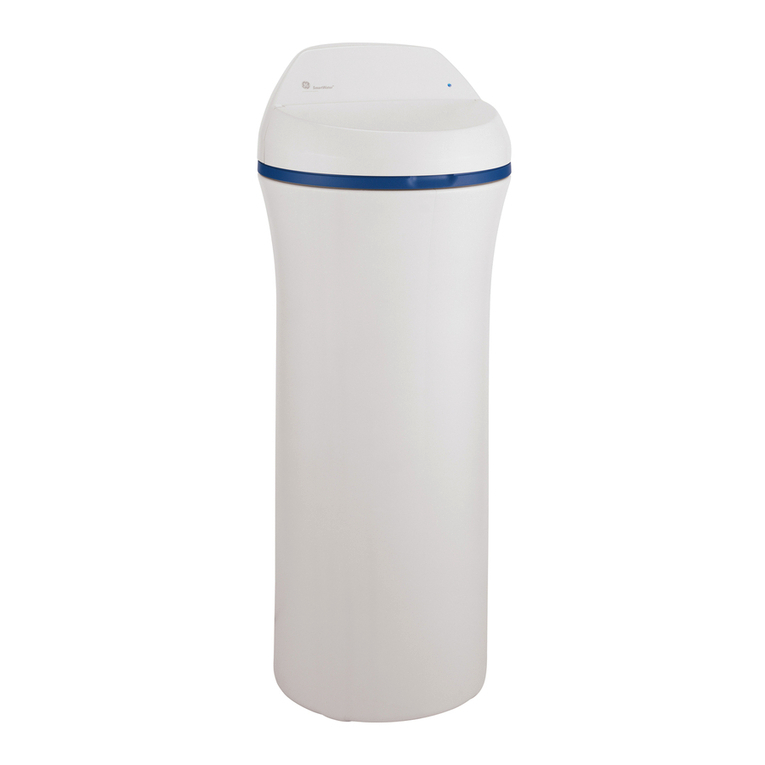
GE
GE GXSF40H Owner's Manual & Installation Instructions
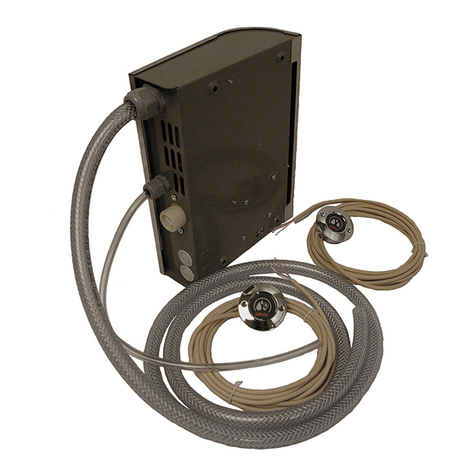
Harvia
Harvia AUTODOSE Instructions for installation and use
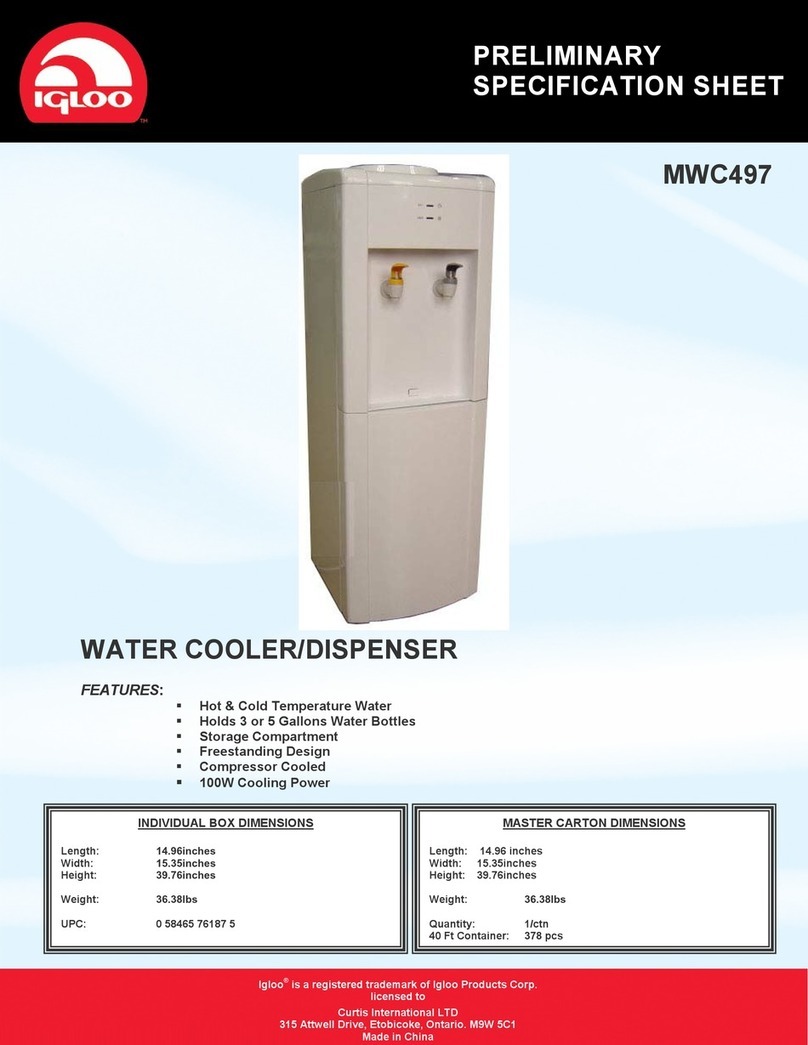
Igloo
Igloo MWC497 Specification sheet
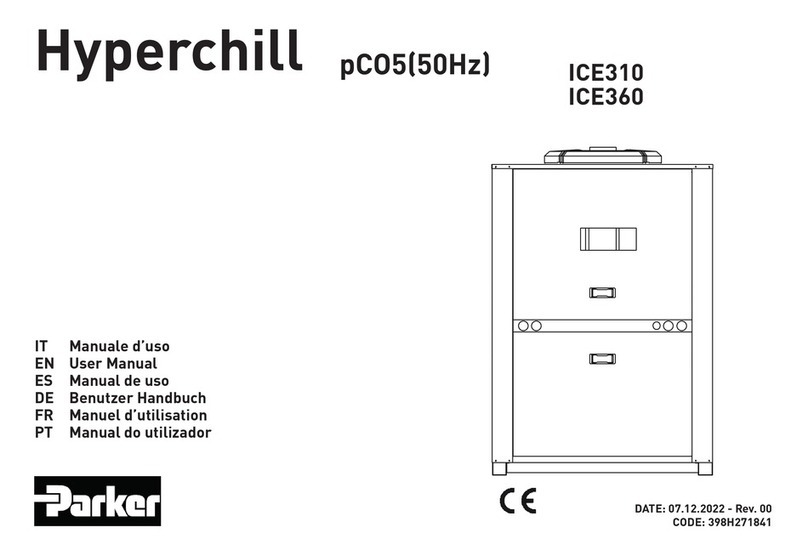
Parker
Parker Hyperchill ICE310 user manual

Water Depot
Water Depot PLATINUM SERIES owner's manual
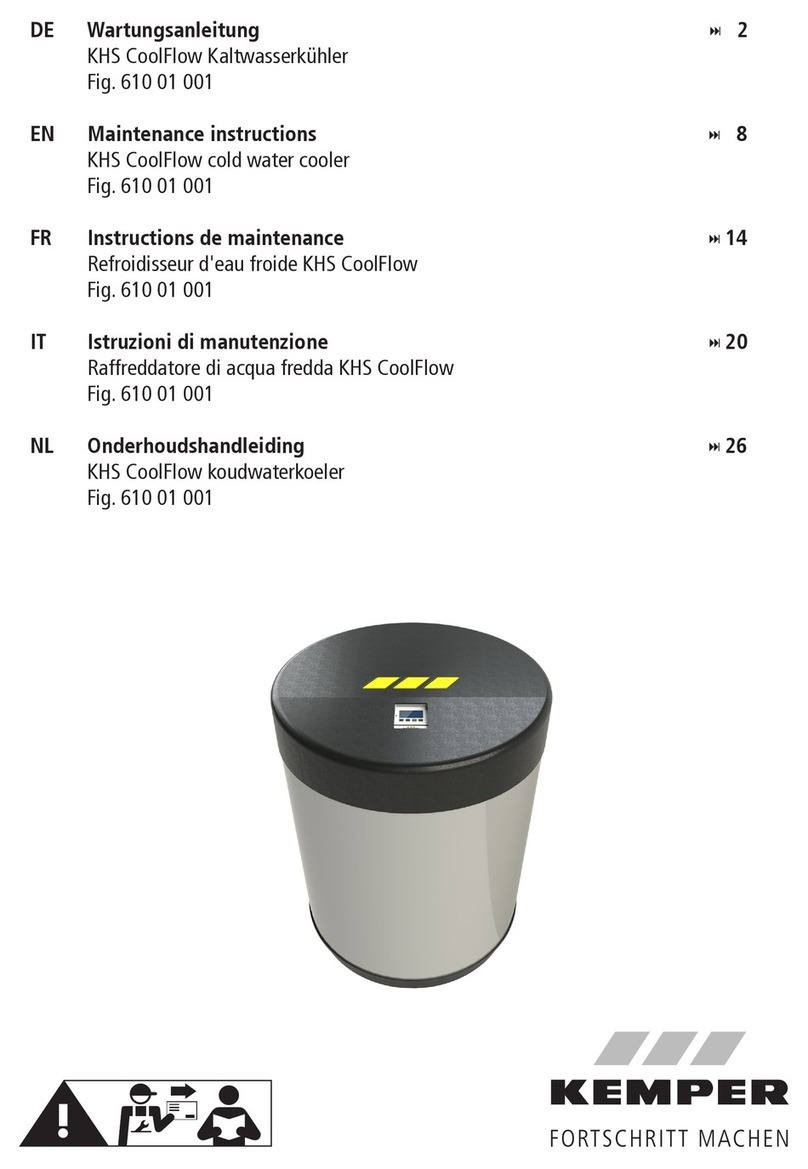
Kemper
Kemper 610 01 Maintenance Instruction
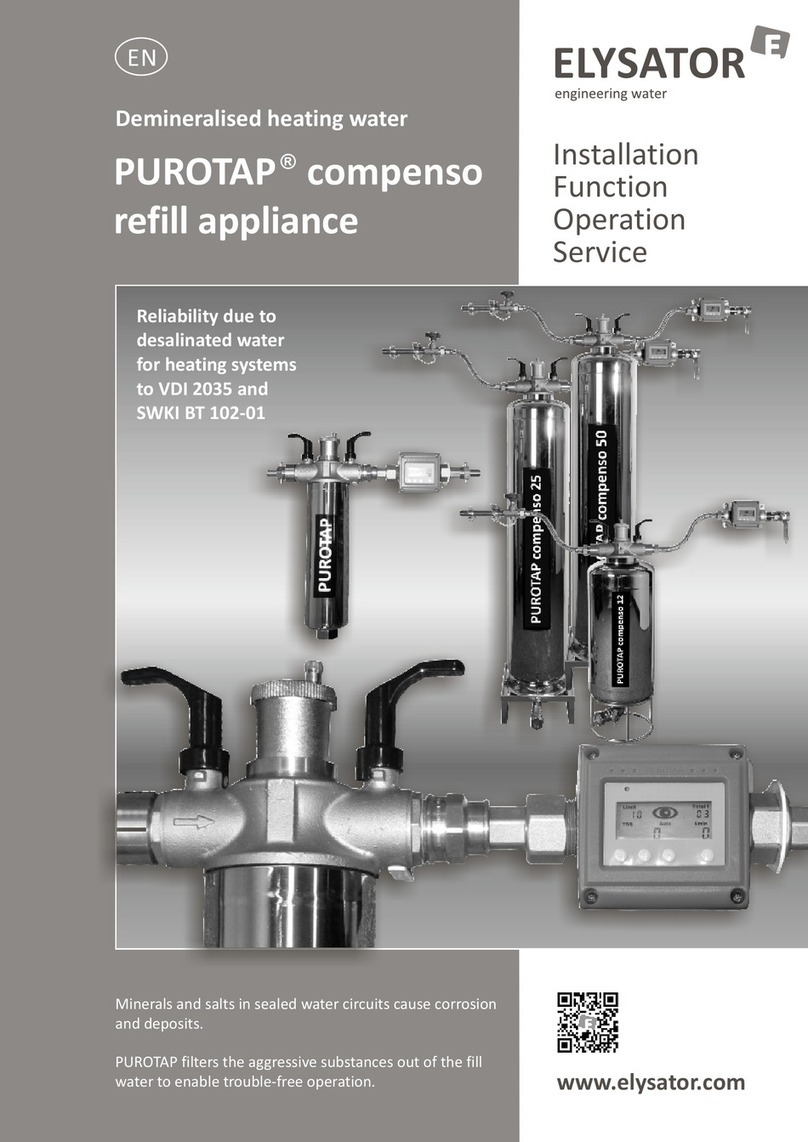
elysator
elysator PUROTAP Compenso Series Installation Function Operation Service


